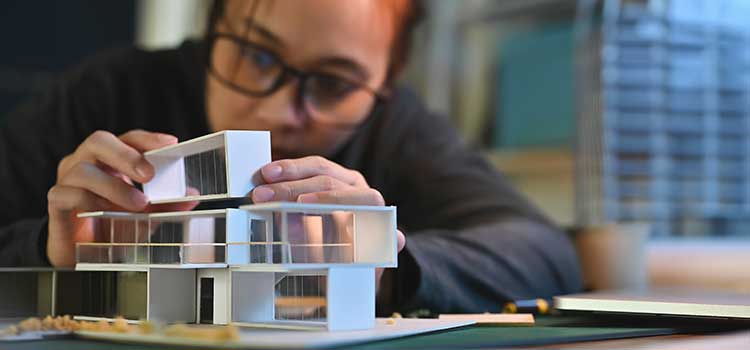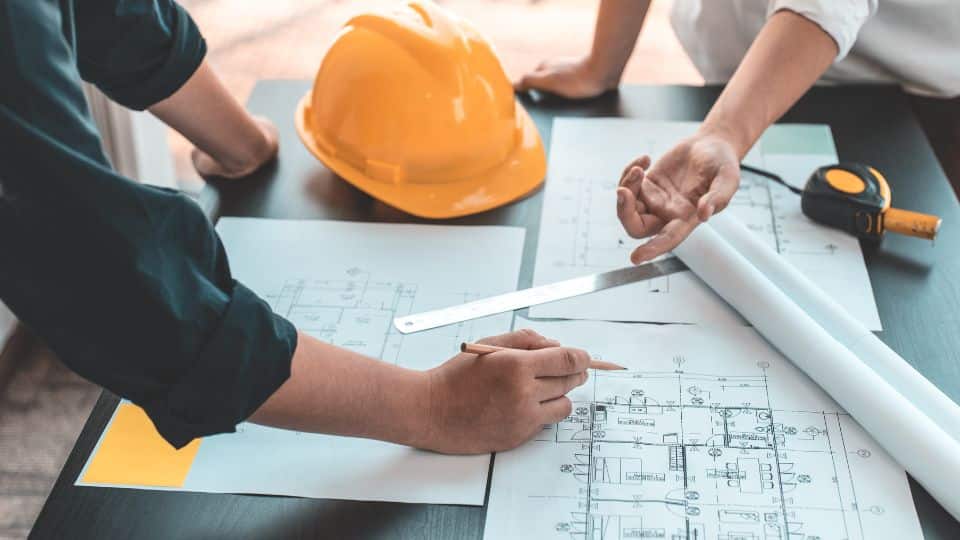Recognizing the Diverse Profession Paths Available for Aspiring Architect
As an ambitious Architect, you have a globe of profession courses waiting for you. Whether you're attracted to traditional architecture or the nuances of lasting design, there's a particular niche that aligns with your rate of interests.
Standard Style: Creating Frameworks and buildings
Typical design concentrates on developing structures and frameworks that mix capability with visual charm. Your layouts can reflect cultural heritage, showcasing neighborhood practices while meeting modern requirements.
You'll establish abilities in composing, model-making, and website evaluation, allowing you to envision and communicate your concepts properly. Engaging with clients, you'll require to recognize their vision and translate it right into viable designs.
Additionally, developing codes and sustainability techniques are crucial in your work, guaranteeing your frameworks are safe and eco-friendly. As you expand in your occupation, you'll locate possibilities in household, business, or perhaps remediation tasks, each offering distinct challenges. Accepting traditional architecture leads the way for a fulfilling profession that admires the past while forming the future.
Urban Planning: Shaping Neighborhoods and Public Spaces
As an ambitious Architect, you can play an important role as an urban planner, transforming exactly how neighborhoods operate and engage. By using community engagement approaches, you'll assure that residents have a voice in forming their atmosphere. Plus, integrating lasting layout concepts will assist produce areas that not just fulfill today's demands but likewise safeguard the future.
Role of Urban Planners
While numerous might believe of designers as the single enthusiasts behind structures, metropolitan coordinators play an important role in shaping the more comprehensive landscape of communities and public spaces. By collaborating with different stakeholders, you'll help develop parks, transportation systems, and domestic locations that advertise social interaction and access. Your expertise in spatial style and community characteristics allows you to visualize future growth while protecting social heritage.
Community Involvement Approaches
Reliable neighborhood engagement approaches are vital for city planners to ensure that the voices of locals are listened to and valued in the preparation procedure. To cultivate significant discussion, you need to focus on open discussion forums and workshops where neighborhood participants can share their concepts and concerns. Usage studies and social media to get to a wider audience, making certain varied viewpoints are included. Teaming up with neighborhood companies can improve count on and facilitate much deeper connections. It is essential to give clear details regarding decision-making processes and suggested projects, enabling locals to really feel informed and empowered. By proactively including and listening feedback, you'll create areas that mirror the area's needs, eventually resulting in more effective and sustainable urban environments. Accept openness and continuous discussion for lasting influence.
Lasting Style Concepts
When developing metropolitan rooms, including sustainable design principles is vital for creating atmospheres that grow both ecologically and socially. Take into consideration incorporating eco-friendly rooms, like yards and parks, to improve biodiversity and enhance air top quality.
Designing with water conservation in mind is additionally essential-- consider rainfall gardens and permeable surface areas to handle stormwater. Entailing neighborhood participants throughout the preparation procedure assurances that the rooms you develop satisfy their demands and urge social interaction. By embracing these principles, you'll add to dynamic, lasting metropolitan landscapes that benefit everyone.

Landscape Design: Creating Lasting Outside Atmospheres
As you explore landscape style, you'll uncover vital design concepts that develop beautiful and functional outdoor rooms. Lasting techniques play a crucial function in making sure these atmospheres grow while reducing environmental effect. And also, you'll discover a variety of occupation opportunities that enable you to make a real distinction in just how individuals interact with nature.
Design Concepts in Landscape
Comprehending design concepts in landscape architecture is crucial for developing lasting exterior atmospheres that integrate with nature. You'll need to contemplate aspects like percentage, equilibrium, and range to guarantee your designs feel cohesive and inviting. Incorporating indigenous plants not only enhances biodiversity yet additionally reduces water usage, making your landscape durable. Consider the circulation of area and exactly how individuals interact with it; pathways and seating locations should invite expedition and leisure. Furthermore, focus on seasonal adjustments, developing with products that complement the surroundings year-round (Architect). By prioritizing sustainability and appearances, you can develop outside rooms that improve the area and advertise well-being. Embracing these concepts will set a solid structure for your career in landscape architecture.
Sustainable Practices Overview
Sustainable practices in landscape architecture not only concentrate on visual appeals but also focus on environmental health and wellness and source conservation. By incorporating native plants, you boost biodiversity and reduce the need for chemical fertilizers and pesticides. Implementing effective watering systems aids conserve water and reduces drainage, shielding close-by ecological communities. You can design rooms that advertise soil wellness, such as practicing and using organic materials permaculture concepts. Furthermore, integrating eco-friendly facilities, like rain yards and permeable pavements, help in stormwater administration and reduces city heat. You contribute to a much healthier earth and supply spaces that foster community connection when you develop exterior environments with sustainability in mind. Ultimately, these practices guarantee your styles benefit both individuals and the atmosphere for many years to find.
Profession Opportunities Exploration
With a solid foundation in lasting practices, landscape architecture offers a selection of career paths that enable you to make a meaningful effect on the atmosphere. You could work as a landscape developer, producing visually pleasing and functional exterior rooms, or specialize in ecological repair, assisting to revitalize broken ecological communities. Urban planners frequently collaborate with landscape designers to create green rooms in city setups, boosting city livability. If you're passionate concerning education and learning, take into consideration ending up being a landscape style educator, motivating future generations. In addition, you could work with nonprofits concentrated on environmental sustainability or participate in study to introduce new techniques. Each course not only forms stunning atmospheres yet also promotes a healthier world for future generations.
Sustainable Layout: Concentrating On Eco-Friendly Practices
As you discover your career in architecture, welcoming environment-friendly methods can set you apart in an affordable field. Lasting style concentrates on developing buildings that minimize ecological impact while boosting passenger health. By including sustainable products, energy-efficient systems, and lasting building techniques, you'll add to a greener future.
Beginning by acquiring understanding of green certifications like LEED or BREEAM, which can bolster your credentials. Consider exactly how all-natural light, ventilation, and thermal performance can Get More Info enhance design. Work together with engineers and ecological experts to innovate remedies that lower waste and preserve sources.
Don't fail to remember the relevance of community participation-- appealing neighborhood stakeholders can inspire designs that integrate with the setting. As customers significantly focus on sustainability, your know-how in environment-friendly methods will certainly not only attract tasks yet additionally accomplish your enthusiasm for responsible architecture. Accept this crucial element of the career, and see your occupation flourish.
Historical Conservation: Securing and Restoring Social Heritage
While you commence on your architectural journey, take into consideration the important function of historic preservation in preserving our social heritage. This field concentrates on the protection and repair of substantial buildings, websites, and structures that inform the stories of our past. By participating in historic conservation, you'll help protect the building heritage that forms neighborhood identity.
As a historical conservation Architect, you'll analyze historical relevance and examine the problem of structures. You'll work carefully with historians and guardians to ensure authentic remediation techniques are used. This occupation course allows you to mix creativity with research, enabling you to develop options that appreciate original materials and craftsmanship.
Your job not just adds to sustainability by reusing existing buildings but also promotes a feeling of satisfaction within communities. Embracing this path will certainly aid you end up being a guardian of history, maintaining the stories and looks that improve our lives.
Inside Architecture: Enhancing Indoor Spaces
Historical conservation and indoor architecture both share a dedication to enhancing the built atmosphere, yet they focus on various aspects. While historic conservation emphasizes keeping a structure's social and historical value, indoor design absolutely nos in on maximizing interior rooms for capability and visual appeals.
As an aspiring Architect, you'll locate that indoor design enables you to mix creativity with technical skills. You'll develop rooms that not only look excellent however also promote convenience and efficiency. This area includes understanding just how light, shade, and products interact within an area, impacting state of mind and functionality.
You'll work on different projects, from household homes to commercial workplaces, guaranteeing that each setting meets the requirements of its residents. By focusing on customer experience, you can change interiors right into motivating and practical rooms, making a significant effect on just how people connect with their environments. Accept the opportunity to enhance interior atmospheres and form the means people work and live.
Industrial Style: Combining Functionality With Appearances
Industrial design plays a necessary function in producing products that perfectly blend aesthetic appeals with performance, guaranteeing that what you utilize daily is not just aesthetically enticing Related Site but additionally sensible. As an ambitious Architect, you could involve yourself in this area, concentrating on creating everything from furnishings to customer electronics. Your work involves comprehending user needs, materials, and manufacturing processes, enabling you to develop ingenious remedies that improve daily experiences.
In industrial layout, you'll usually team up with suppliers, engineers, and online marketers, guaranteeing that your styles are not only beautiful yet also feasible. You'll discover to balance type and feature, focusing on usability without compromising style. By sharpening your skills in laying out, 3D modeling, and prototyping, you'll be well-appointed to bring your ideas to life. This career path uses a vibrant setting where imagination fulfills practicality, making it a fulfilling choice for engineers curious about shaping the products of tomorrow.
Regularly Asked Inquiries
What Educational Credentials Do I Need to Come To Be an Architect?
To end up being an architect, you'll require a specialist degree in architecture, usually a Bachelor's or Master's. In addition, you'll have to finish a teaching fellowship and pass the Architect Enrollment Exam to exercise legally.
Exist Qualification Demands for Different Architectural Occupation Paths?
Yes, there're qualification demands for various building courses. Architect. You'll need to pass examinations, full internships, and occasionally go after specialized training, depending on your chosen emphasis, like landscape architecture, urban layout, or historic conservation
What Software Application Skills Are Crucial for Architects Today?

How Can I Gain Practical Experience While Studying Architecture?
You can get practical experience by interning at architectural firms, taking part in style competitions, volunteering for community jobs, or collaborating with classmates on real-world assignments. These opportunities boost your abilities and develop useful connections in the market.
What Task Opportunities Exist Outside Traditional Architecture Firms?
You can discover numerous work chances outside traditional design firms, like city planning, indoor style, landscape style, building management, actual estate development, or perhaps functions in sustainability consulting. Each offers special obstacles and benefits.
Whether you're drawn to conventional architecture or the nuances of lasting layout, there's a particular niche that straightens with your interests.When creating urban areas, including lasting style principles is critical for producing atmospheres that prosper both environmentally and socially.As you check out landscape style, you'll discover necessary layout principles that develop stunning and practical exterior rooms.Understanding layout concepts in landscape design is essential pop over here for creating sustainable outside atmospheres that integrate with nature.In commercial layout, you'll commonly team up with engineers, suppliers, and marketing professionals, making certain that your layouts are not only beautiful but also viable.
Comments on “Architect Portfolio Samples That Attract Clients Fast”